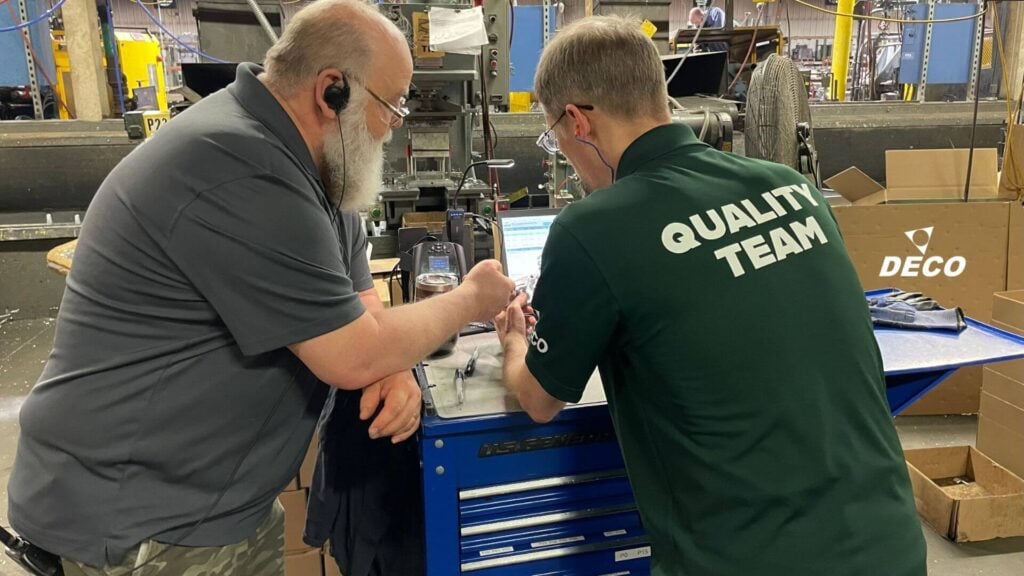For decades, zinc die casting has long been widely used to create complex shapes with tight tolerances. While the success of a zinc die casting project depends on several factors, it is essential to understand how porosity will impact the quality of a casting.
Porosity is the presence of air trapped in a die cast part that can weaken the part or cause other more visual imperfections. Unfortunately, in both high-pressure and low-pressure diecasting operations, some amount of air will always be trapped in a casting due to the shot speed. The trick is to design the part such that the entrapped air is minimized and controlled to the areas where it will have the least negative impact.
As such, it is essential to understand the causes of porosity in zinc die casting and how we can design a part to maximize manufacturing success. Our engineers understand how to manage porosity to ensure high-quality castings that meet or exceed industry standards.
Techniques for Reducing Porosity
As we discussed above, some amount of air will always be trapped in any high-pressure die casting process. This is because of the speed at which the molten metal is forced into the cavity that will form the part. Fortunately, there are several techniques that engineers utilize to minimize porosity in the casting.
The first and best technique involves optimizing the design of the casting. Adding features that facilitate the proper flow of the molten metal reduces the amount and severity of the probable porosity in the critical areas of the part. Our engineering team can review your drawings and let you know where your product design may be at risk for porosity challenges.
Our engineers will likely make recommendations based on flow directions and sufficient wall thickness in critical sections. They will also point out challenging features, such as sharp corners, perfect circles, dead ends, or other features that impede the flow of metal or create turbulent pockets of flow.
The next best method we have at our disposal is to design runners and overflows to optimally fill the part. Runners and overflows help improve the material flow through the part without changing the features of the part directly.
The runner system is how the liquid zinc flows into the part. It is essential to develop a clean path for the zinc to flow through the part without creating too much turbulence. The overflows allow us to pull additional metal through the part. These overflows will ultimately be removed and discarded, allowing us to improve the metal flow through the cavity without changing the product design.
Another option we have available to us is to add vents to the mold. Vents are channels designed to let the air escape the mold without letting liquid zinc escape. These vents need to be designed thoughtfully, as vents can present a danger to machine operators. Any time there is a path available for liquid zinc to escape during the high-pressure injection molding process, there are increased risks.
While these techniques allow us to minimize the amount of porosity, porosity can never be fully eliminated. However, we can reduce it’s overall impact, and use design techniques to attempt to make sure any trapped air is trapped in a location where the porosity will not cause a failure in the product.
Methods to Detect Porosity
Sometimes porosity is visible at the surface at the product, but frequently the porosity is hidden beneath the “skin” of the casting.
If the porosity is superficial, the most common and effective method for detecting porosity in casting is through visual inspection: a thorough visual examination of the casting’s surface can reveal any porosity visible defects, or imperfections.
Detecting porosity beneath the surface is more complex. In some cases, it may be worthwhile to x-ray the parts to detect where the entrapped air is located. This would be more common in highly quality-sensitive operations, such as aerospace or automotive, where parts may be serving in a safety-critical function.
A simpler way to look beneath the surface is to cut open a casting where the suspected air entrapment is occurring. When coupled with mold flow analysis to ensure good correlation of the earlier tool design analyses.

Deco Products is experienced at optimizing your design
In conclusion, zinc die casting porosity can have substantial negative effects on the quality, strength, appearance, and structural integrity of the final product. However, through careful design and production techniques, engineers minimize and manage porosity to allow for a reliable quality-casting.

